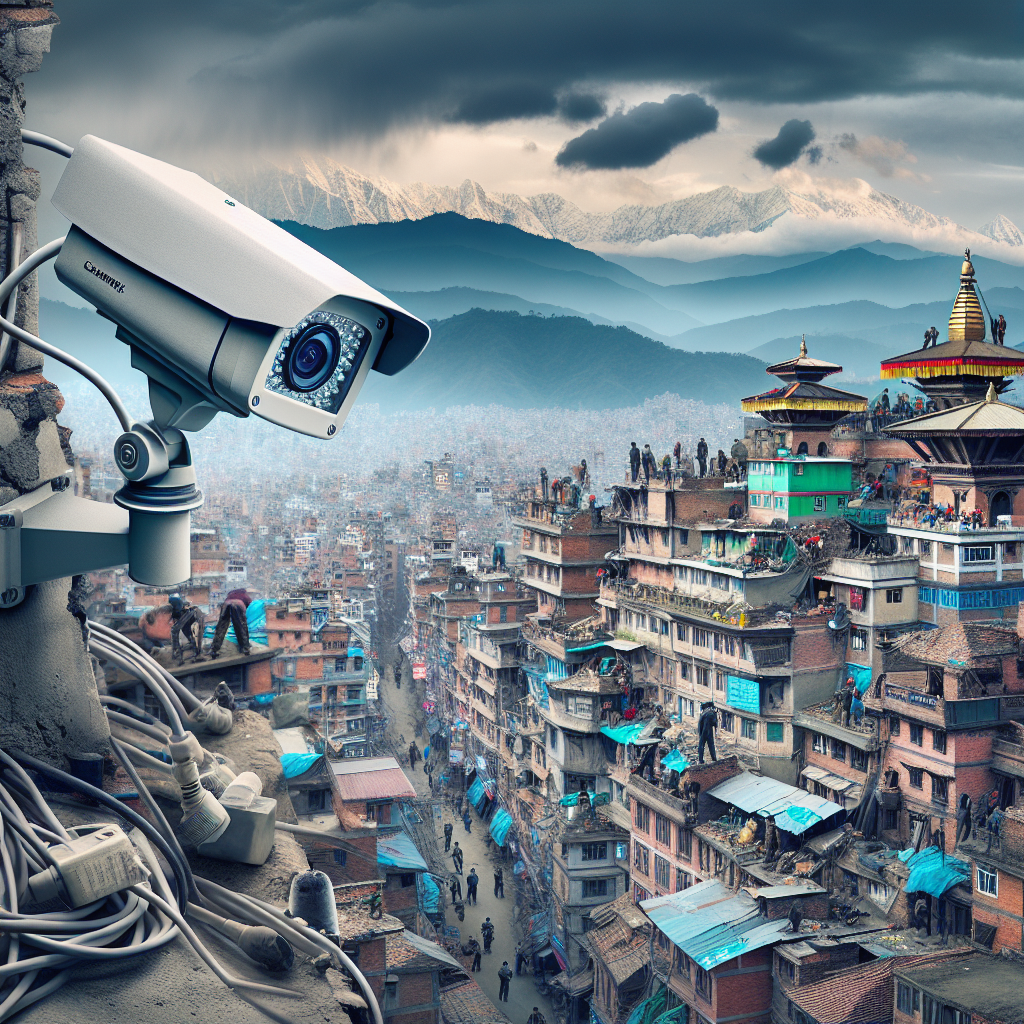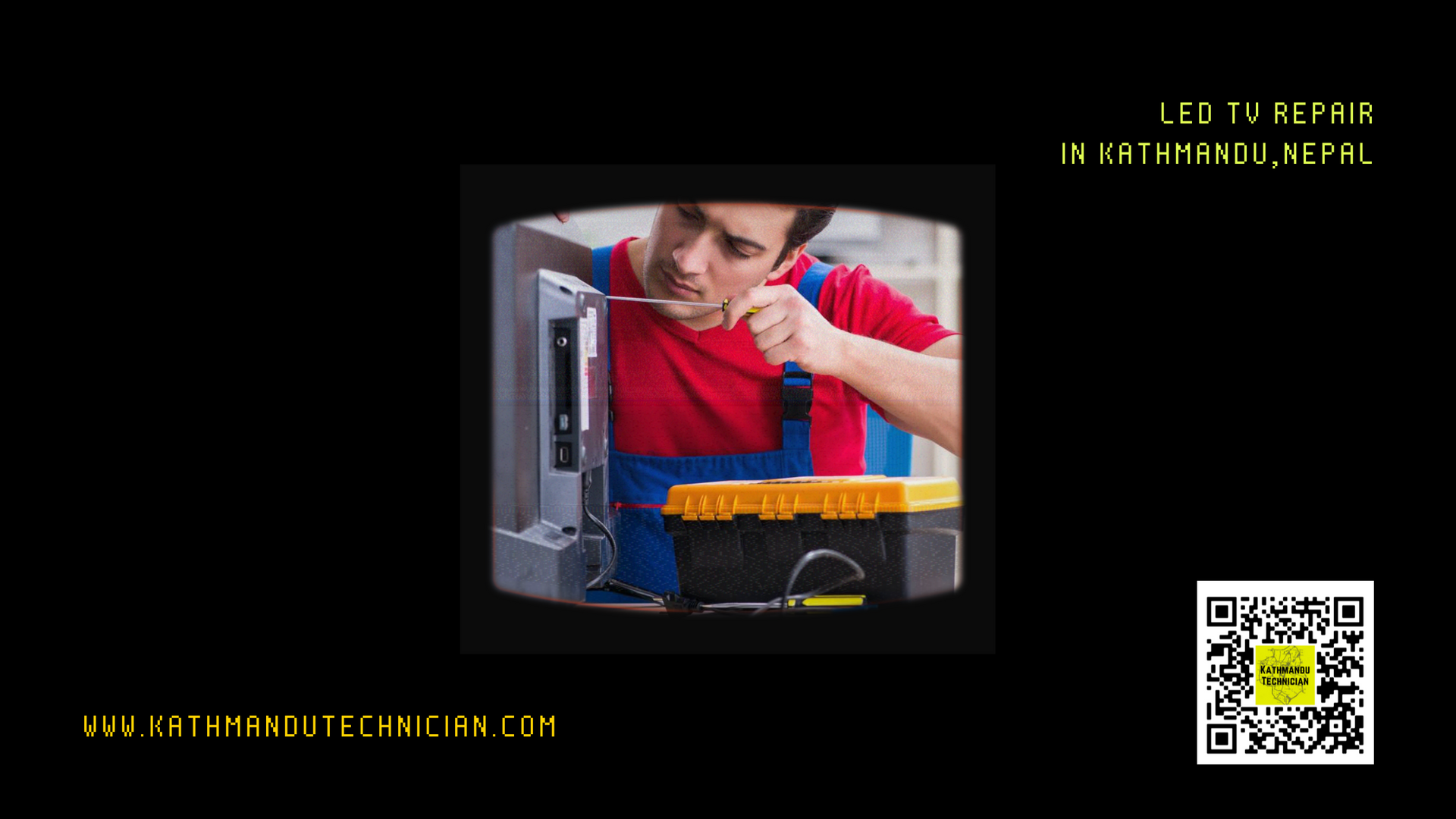CCTV Camera Installation in Kathmandu Nepal: A Complete Guide
Introduction
Closed-circuit television (CCTV) cameras are becoming increasingly ubiquitous in Kathmandu as businesses and homeowners seek improved security and surveillance. A properly designed and installed CCTV system can help deter crime, assist police investigations, monitor premises remotely, and provide vital video evidence when required.
However, several important factors need consideration for optimal CCTV performance in Kathmandu's specific environment and climate. This comprehensive 3000+ word guide explores everything you need to know about installing CCTV systems in Kathmandu Valley–from choosing camera types, ideal positioning practices, following local regulations, hiring installers, and maintaining the system.
Benefits of CCTV Cameras in Kathmandu
Here are the major benefits of installing CCTV surveillance for your home or business in Kathmandu:
Improved Security and Crime Deterrence
The primary motivation for CCTV is enhancing security. Visible cameras can deter crimes like theft, vandalism, and trespassing on your property. Criminals don't wish to be recorded, so having CCTV makes them avoid premises to target easier locations instead.
Retail stores use CCTV to discourage shoplifting. Facilities like banks can quickly detect robberies and capture identifying footage for the police. Public area CCTV helps prevent petty crimes. Studies show surveillance cameras can reduce crimes by up to 51% in some cases.
Assists Police Investigations
After crimes occur on your property, CCTV footage provides the police with invaluable visual evidence. Detectives can analyze the video to identify suspects based on appearance, clothing, mannerisms, etc. The footage may reveal criminals in the act unbeknownst to them. It can provide clues like getaway vehicle plates to help track perpetrators.
CCTV evidence can greatly improve investigation speed and efficacy compared to relying solely on eyewitness testimony and manual evidence gathering. Cases get resolved much quicker when incriminating video evidence exists.
Deters Theft and Vandalism
Proper CCTV positioning provides constant monitoring of assets and inventory storage areas. Retail stores often have cameras pointing directly at cash registers to deter employee theft. Warehouses can prevent inventory pilferage via surveillance. Public areas like parks use CCTV to protect against vandalism.
The deterrent effect also prevents disgruntled workers from damaging equipment or engaging in workplace violence knowing cameras record their actions.
Provides Liability Protection Evidence
CCTV footage offers undisputed visual proof in case of disputed accidents, injuries, or damages on your premises. For example, video evidence can protect against fraudulent or exaggerated injury claims by showing exactly what happened. If a customer alleges injury from a slip and fall, the footage can reveal whether adequate precautions were taken by staff. Similarly, CCTV recordings establish factual visual evidence for insurance and legal claims.
Allows Remote Monitoring
Modern CCTV systems allow remote access from any internet-connected computer, tablet, or smartphone. Business owners and managers can view live feeds from home or anywhere in the world. Alert notifications with short video clips can also be sent to detect motion. This enables prompt response to incidents and timely last-minute checks.
Remote access CCTV is especially useful for monitoring multiple business locations spread across Kathmandu Valley from a central control room.
Provides Peace of Mind
For many homeowners and businesses, CCTV systems provide immense peace of mind. Knowing your property is monitored 24/7 deters criminals and provides assurance that any crimes will be recorded for investigation. Business owners feel more secure remotely viewing their premises while traveling. CCTV also prevents staff deniability when they attempt to cover up unethical actions. Overall, CCTV surveillance enables smooth and secure operations.
Laws and Regulations for CCTV in Kathmandu
While CCTV provides abundant benefits, certain laws and regulations in Kathmandu govern its installation and use:
Privacy Protection Laws
Nepal has laws protecting reasonable privacy expectations of individuals. CCTV cannot be installed in locations where one can reasonably expect privacy like bathrooms, locker rooms, etc. Only public areas on your premises may be legally monitored by CCTV. Violating privacy laws by recording prohibited private spaces can incur heavy penalties.
Signage Requirements
Current Kathmandu regulations mandate installing warning signs to alert people of CCTV surveillance on premises. Notices must be prominently displayed at the entrance/perimeter of monitored areas. This informs those entering that they may be recorded, allowing them to make fully informed access decisions.
Camera Positioning Regulations
Rules govern CCTV camera positioning and coverage span - cameras should only monitor your premises. Footage should not inadvertently capture public roads, neighboring properties, etc. CCTV cameras cannot be used to spy on spaces beyond your private property boundaries. There are viewing angle and zoom limits based on premises dimensions.
Licensing Requirements
Businesses installing, maintaining, or repairing CCTV systems in Kathmandu need proper licensing. This covers CCTV equipment dealers, distributors, and installation technicians. Licensing ensures they have the mandatory qualifications, expertise, and competency. Customers can verify license credentials when engaging CCTV equipment suppliers and installers.
By following relevant laws and acquiring necessary permits/licenses, CCTV surveillance systems can be legally installed in Kathmandu for security purposes.
Key CCTV Camera Selection Factors
Several important factors need analysis when choosing CCTV cameras for your Kathmandu property:
Indoor vs Outdoor Cameras
Outdoor CCTV cameras require weatherproofing and ruggedized construction to withstand dust, moisture, and temperature fluctuations. Their housing is sealed against elements and often heated to prevent fogging.
Indoor CCTV cameras have smaller, discreet form factors since they do not need weather sealing. They also have higher light sensitivity without having to counter sunny conditions.
Fixed vs PTZ Cameras
Fixed CCTV cameras provide continuous surveillance of a single preset area. Their coverage span is limited by fixed mounting. PTZ cameras overcome this via remote pan, tilt, and zoom control.
PTZ allows adjusting the camera angle and zooms remotely to monitor a wide scene. PTZ cameras can also manually track people and objects. However, they cost more than fixed cameras.
Analog vs IP CCTV Systems
Analog CCTV cameras transmit video over a coaxial cable to a DVR recorder. IP CCTV cameras are digital and transmit high-resolution footage over any IP network. IP CCTV provides better video quality, intelligent analytics, easy remote access, and higher scalability.
Due to the limitations of analog technology, IP CCTV systems are now predominantly installed in Kathmandu over outdated analog models.
Video Resolution Quality
CCTV camera resolution determines the image quality and detail captured. 480p and 720p resolutions are too pixelated to identify faces, license plates, logos, etc. Choose 1080p or higher 4K Ultra HD whenever possible for sharper detail. Higher resolution allows for capturing finer details essential for identification purposes.
Low Light and Night Vision Capabilities
Quality CCTV cameras are optimized for low light conditions using sensitive image sensors and supplemental infrared LEDs for night vision. This enables clear monochrome footage even in pitch-dark conditions when ambient light is minimal.
Cameras without night vision produce extremely grainy or even useless footage after daylight. For 24-hour surveillance, CCTV cameras should have low light sensitivity below 0.1 lux and an infrared illumination range of at least 100 feet.
Weatherproofing
Kathmandu's humid, wet, and dusty climate requires external CCTV cameras to have adequate seals and ingress protection. Camera housing should have an IP66 or IP67 rating minimum to withstand heavy rain, pollution, and dust. Also, aim for impact resistance ratings like IK10.
Where to Install CCTV Cameras in Kathmandu

Proper CCTV camera placement is vital for effectively monitoring your Kathmandu premises. Typical locations include:
Entry and Exit Points
Cameras at entry/exit points like doors, windows, gates, etc. allow monitoring of everyone entering or leaving. Critical entry points like service doors should also have CCTV surveillance. Cameras can capture identifying details like faces, clothing colors, and vehicle plates.
Rules may mandate keeping certain entry/exit cameras active 24/7. Optimal camera positioning is essential at delivery points to record couriers and shipments.
High Foot Traffic Areas
CCTV installation in high foot traffic areas like lobbies, corridors, staircases, etc. provides ample coverage across the premises. Blind spots in these areas should be covered for maximum visibility. PTZ cameras work well to monitor long hallways.
Point of Sale Areas
Retail stores, restaurants, and other businesses handling cash transactions must-have cameras dedicated to point-of-sale areas. This will primarily deter and catch employee theft. Cash register CCTV also confirms transactions in case of disputes over returned items, refunds demanded, etc. Warning signs should be displayed prominently in POS areas.
Locations with Valuable Assets
Warehouses, inventory storage rooms, merchandise displays, IT server rooms, etc. warrant surveillance cameras to secure valuable items and materials. CCTV monitoring in areas housing expensive equipment prevents asset theft and misuse. Banks typically have CCTV covering every angle of vaults and cash handling.
Blind Spots and Isolated Areas
Blind spots are areas not easily visible due to layout obscurity. This includes concealed corners, dim stairwells, basement storage, etc. Covering them with CCTV compensates for their seclusion. Infrequently accessed areas like unused rooms, and rooftop patios also need cameras to deter trespassers when unoccupied.
Outdoor Perimeter Areas
External cameras mounted around the perimeter provide 24/7 surveillance. They can detect trespassers and spot suspicious activities like loitering or casing for illegal entry points. Points of vehicular/pedestrian entry/exit, parking lots, driveways, gates, compound walls, etc. should have CCTV monitoring. For large compounds, strategically place cameras for overlapping coverage.
Best Practices for CCTV Installation
Proper installation practices are vital for optimizing CCTV system performance and longevity. Follow these professional installation best practices:
Mount Cameras Securely
CCTV cameras require tamper-proof mounting via sturdy brackets, junction boxes, or other hardware securely attached to walls, ceilings, poles, etc. The mounting point must safely bear the camera's weight. Exposed conduits and wiring should not be easily cut or detached. Use vandal-proof reinforced housings and casings.
Optimize Viewing Angles
Cameras must be positioned strategically for optimal unobstructed surveillance over key areas. Balance coverage width vs closeup detail needs. Often multiple overlapping cameras are required for comprehensive monitoring across larger premises. Maintain a minimum 3 meters lens height for an overview perspective.
Account for Lighting Conditions
Camera settings like exposure and contrast must be adjusted based on ambient light levels in the area during the day and night. Auto low-light modes enable a seamless transition to infrared night vision when needed. Avoid positioning cameras where they get direct sunlight which creates glare and shadows.
Conceal Cables and Wiring
For safety and aesthetics, CCTV wiring routed from cameras to the recorder should be concealed. Rollout cable trays, conduits, trunking, and raceways fully hide cables running along ceilings and walls. Wireless cameras avoid cabling but may suffer interference. Keep power and video cables in separate conduits.
Dedicated Power Circuit
Cameras and NVR recorders should have an independent power line running directly from the breaker panel. This prevents voltage fluctuations that can disrupt recording. Always calculate total CCTV system wattage before installation for adequate circuit capacity. Avoid overloading outlets by plugging in multiple devices.
Hire Professional Installers
Seeking reputable CCTV installation contractors in Kathmandu is highly recommended, especially for commercial premises and complex home setups. Professional installers offer:
- Site surveys to find optimal camera mounting locations
- Installing cabling, wiring, and connections expertly
- Programming, testing, and adjusting cameras for peak performance
- Meeting legal requirements and handling permitting
- Providing training, documentation, and support
DIY CCTV installation is possible for very basic, low-camera-count systems. However professional installation is suggested for more robust CCTV deployments.
Follow Local Regulations
There are legal protocols in Kathmandu governing aspects like camera positioning, signage requirements, privacy rights, etc. Improper installation could cause major issues later on. Seek relevant permits and approvals before starting the CCTV installation process.
Maintaining and Managing CCTV Systems
Follow these maintenance best practices to keep CCTV systems in Kathmandu performing optimally for years:
Regularly Test Cameras and Connections
Check cameras at least weekly to confirm proper functioning and footage recording. Review sample footage to check video quality. Rapidly fix any defective cameras, recorders, or cabling issues to prevent coverage gaps.
Clean Camera Lenses and Housing
Accumulated dust, dirt, and debris on outdoor CCTV camera lenses should be gently cleaned off using microfiber cloths or lens cleaning fluid. Also regularly remove grime buildup from external camera housings and fixtures. Check for paint fading or rust signs. Clean PTZ dome bubbles to maintain clarity.
Update Firmware and Software
Keep the CCTV system firmware and management software updated regularly. Firmware upgrades improve stability and fix vulnerabilities. Newer software versions add capabilities like video analytics, remote access improvements, expanded camera capacity, etc.
Schedule Professional System Audits
An annual expert CCTV system audit helps catch problems like aging cabling, pixel burnout, etc before outright failures happen. Specialists can confirm optimal configuration settings, perform upgrades, assist with maintenance questions, and maximize system lifespan.
Monitor and Replace End-of-Life Hardware
CCTV system components like cameras, cabling, recorders, etc. have finite lifespans and require replacement once they deteriorate. Camera image sensors may underperform after 5 years. Plan to upgrade aging analog cameras to superior IP models every 7-10 years. Prioritize replacements before failures occur.
Implement Critical System Redundancies
For high-security CCTV systems, deploy redundancies like secondary NVRs and uninterruptible power supplies to prevent losing footage due to outages or DVR crashes. For large premises, hierarchical camera architectures minimize single-point failures. Failover cameras provide backup coverage if units fail.
Secure Recordings and Infrastructure
Prevent unauthorized access to footage and camera feeds by having cybersecurity measures like firewalls, access controls, data encryption, and activity logging. Do not expose NVRs directly to public networks. Physically secure recorders in locked rooms. Deter tampering using vandal-proof cameras and conduit wiring.
Conclusion
Installing a properly planned CCTV system along with following best practices for installation, management, and maintenance can provide building owners in Kathmandu with enhanced security, liability protection, and operational efficiency. However, it requires carefully choosing camera types suited for the environment, optimal placement, following local regulations, hiring professional installers, and ongoing system auditing and upkeep. This comprehensive guide covers all the key factors to consider for maximizing your CCTV investment in Kathmandu.


